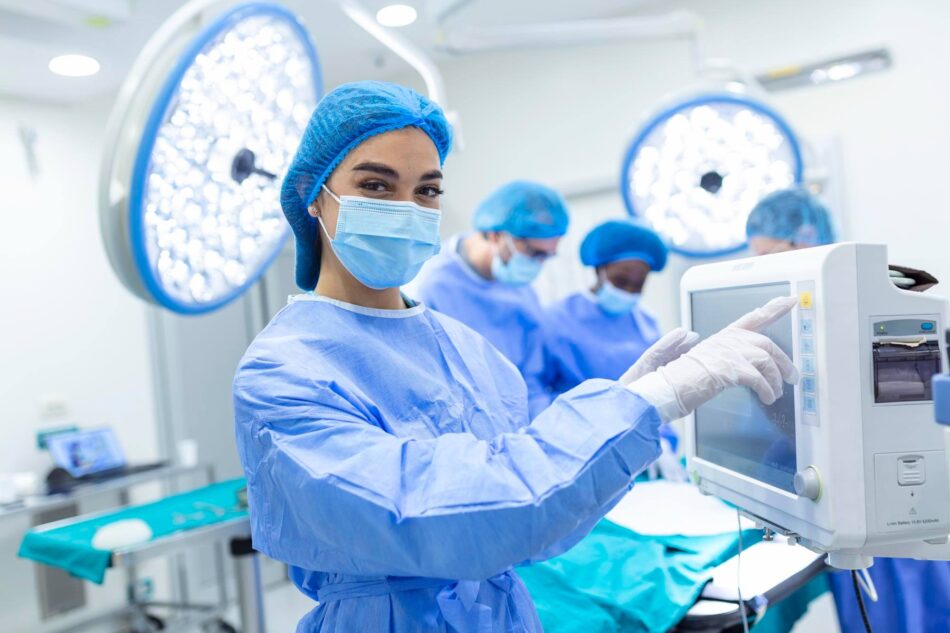Over the last few decades, gynecological surgery has undergone a remarkable transformation, with one of the most significant breakthroughs being the emergence of laparoscopic surgery, commonly known as minimally invasive surgery. From treating fibroids and endometriosis to performing hysterectomies and ovarian cyst removals, laparoscopy is now considered the gold standard for many gynecological procedures. But what makes this technique so revolutionary, and why is it being called the future of women’s health surgery? Let’s explore.
What is Laparoscopy?
Laparoscopy is a surgical technique that involves making small incisions in the abdomen and using a camera (laparoscope) and specialized instruments to perform procedures inside the body. Unlike traditional open surgery, which requires larger cuts and longer recovery time, laparoscopy allows surgeons to work with greater precision while causing less trauma to the body.
Why Laparoscopy is Gaining Popularity in Women’s Health
1. Minimally Invasive, Maximum Comfort
One of the key reasons laparoscopy is becoming the preferred option for gynecological surgery is that it is significantly less invasive. Women no longer need to fear large surgical scars or long hospital stays. Laparoscopic procedures usually involve just 2–4 small incisions, and patients often go home the same day or the next.
2. Faster Recovery and Less Pain
Because of the smaller incisions and minimal tissue damage, patients experience less post-operative pain and can return to normal activities much sooner. Recovery time for laparoscopic surgery is typically 1–2 weeks, compared to 4–6 weeks for traditional open surgery. This is especially beneficial for working women and mothers who need to resume their daily responsibilities quickly.
3. Reduced Risk of Infection and Complications
With less exposure to internal organs and shorter hospital stays, the risk of infections and complications is significantly lower in laparoscopic surgeries. This makes it a safer option, particularly for women with underlying health conditions or those undergoing repeat procedures.
4. Better Cosmetic Results
For many women, appearance matters after surgery. Laparoscopy offers a more aesthetically pleasing outcome with minimal scarring. The small incisions usually heal well and are often hidden in natural skin creases or below the bikini line.
5. Higher Precision with Better Visualization
Thanks to high-definition cameras and advanced laparoscopic instruments, surgeons can view the reproductive organs in greater detail than with the naked eye. This enhanced visualization allows for more precise and accurate procedures, minimizing damage to surrounding tissues.
Conditions Commonly Treated with Laparoscopy in Gynecology
Laparoscopy is versatile and can be used to diagnose and treat a wide range of gynecological conditions, including:
- Endometriosis
- Uterine fibroids
- Ovarian cysts
- Ectopic pregnancy
- Pelvic adhesions
- Infertility evaluations
- Hysterectomy (removal of the uterus)
- Myomectomy (removal of fibroids while preserving the uterus)
Each of these conditions, when treated laparoscopically, results in fewer complications, better outcomes, and quicker recovery for patients.
How Laparoscopy Empowers Women
Today’s women are more informed and involved in decisions about their healthcare. They often seek out options that allow them to maintain their quality of life with minimal disruption. Laparoscopy aligns perfectly with these needs. It offers a balance of effectiveness and convenience, allowing women to take control of their health without the fear of a lengthy recovery.
Furthermore, laparoscopy is also changing how fertility treatments and diagnostic procedures are conducted. It allows for the evaluation of fallopian tubes, uterus, and ovaries in a less invasive way, providing critical insights for women struggling with infertility.
The Role of Technology in Advancing Laparoscopy
As medical technology continues to advance, so does the field of laparoscopic surgery. Today, many gynecological laparoscopic procedures are supported by robotic systems that enhance surgeon control and dexterity. These robotic-assisted surgeries offer even greater precision, reduce surgeon fatigue, and open doors to more complex procedures being performed with minimally invasive techniques.
Laparoscopic instruments are also becoming more refined, with features such as energy sealing, tissue morcellation, and contained tissue extraction systems improving safety and outcomes for patients.
Conclusion
Laparoscopy is not just a trend; it’s a transformative shift in how gynecological surgeries are performed. It offers real, measurable benefits, less pain, faster recovery, fewer complications, and better cosmetic results. For women facing surgical treatments for reproductive health conditions, it represents a safer, smarter, and more empowering option.
As awareness spreads and access to skilled laparoscopic surgeons increases, more women will benefit from this modern approach. With its clear advantages and continuous innovations, laparoscopy is undeniably the future of women’s health surgery, and that future is already here.







